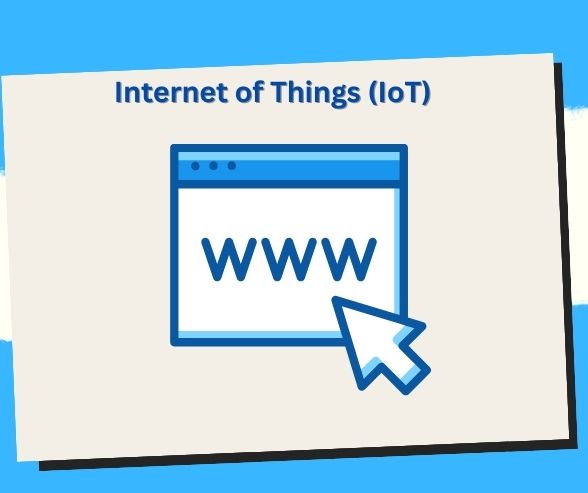
 Industry 4.0 Evolution: How 5G is Reshaping Manufacturing and Automation!
Industry 4.0 Evolution: How 5G is Reshaping Manufacturing and Automation! 


 5G’s Impact on Industrial Automation (Industry 4.0): Shaping the Factory of the Future
5G’s Impact on Industrial Automation (Industry 4.0): Shaping the Factory of the Future 

Step into the factory of the future, where machines communicate seamlessly, production lines adapt on the fly, and productivity reaches unprecedented heights. This transformation is made possible by the convergence of two technological giants: 5G and Industrial Automation, also known as Industry 4.0. In this comprehensive article, we’ll explore how 5G is revolutionizing industrial automation, reshaping manufacturing processes, and unlocking the potential of smart factories.

Before we delve into the impact of 5G, let’s understand the significance of Industry 4.0:
Industry 4.0 represents the fourth industrial revolution, characterized by the fusion of digital technologies, the Internet of Things (IoT), and automation in manufacturing. It’s all about creating “smart factories” that leverage data and connectivity to optimize operations and drive efficiency.
A. Key Components of Industry 4.0
- IoT Sensors are embedded in machines and equipment to collect real-time data.
- Big Data Analytics: The collected data is analyzed to make informed decisions and predictions.
- Machine Learning and AI: These technologies enable machines to learn from data and improve processes autonomously.
- Robotics and Automation: Robots work alongside humans, performing tasks precisely and quickly.

Now, let’s explore how 5G is transforming industrial automation:
A. Low Latency Communication
5G’s ultra-low latency is a game-changer in manufacturing. Machines can communicate in real time, allowing for split-second decision-making. This is crucial for tasks that require precision and coordination, such as robotic assembly or remote maintenance.
B. Massive Device Connectivity
5G can support a vast number of IoT devices simultaneously. Sensors and smart equipment can transmit data seamlessly, providing a comprehensive view of the factory floor and enabling predictive maintenance.
C. High-Speed Connectivity
With download speeds up to 10 Gbps, 5G ensures that data-intensive applications like augmented reality (AR) and virtual reality (VR) can be used for training, maintenance, and quality control without lag or buffering.
D. Network Slicing
5G’s network slicing capability allows for creating dedicated network segments for specific purposes. This means critical applications, such as emergency shut-offs or quality control, can have their slice of the network, ensuring uninterrupted operation.

Let’s explore how 5G is being applied in real-world manufacturing scenarios:
A. Predictive Maintenance
By continuously monitoring equipment and analyzing data, 5G-powered predictive maintenance can identify potential failures before they happen. This reduces downtime, extends equipment lifespan, and saves on maintenance costs.
B. Remote Monitoring and Control
Factory managers can remotely monitor and control machinery through high-definition video feeds and real-time data streams. This enables quick response to issues and adjustments to production processes.
C. Collaborative Robotics
5G enables the seamless collaboration between humans and robots. Cobots (collaborative robots) can work alongside workers, performing repetitive or dangerous tasks, while humans focus on more complex duties.
D. Quality Control with AR and VR
Augmented reality (AR) and virtual reality (VR) are used for quality control and worker training. Employees can use AR glasses to visualize assembly instructions or VR simulations to practice complex procedures.
E. Supply Chain Optimization
5G-connected IoT sensors provide real-time data on the movement of goods and materials throughout the supply chain. This information enables better inventory management, reduces delays, and improves efficiency.

While 5G is poised to revolutionize industrial automation, several challenges and considerations must be addressed:
- Infrastructure Deployment: The rollout of 5G infrastructure in manufacturing facilities can be costly and require significant upgrades to accommodate the new technology.
- Security: With increased connectivity, the risk of cyberattacks and data breaches also rises. Robust cybersecurity measures are essential to protect sensitive data and critical operations.
- Skill Gaps: As factories become smarter, the workforce must acquire new skills to operate and maintain advanced technology effectively.
- Interoperability: Ensuring that different machines and systems can communicate seamlessly is crucial for the success of Industry 4.0 initiatives.

In conclusion, the partnership between 5G and Industrial Automation is paving the way for the factory of the future. This future is characterized by agility, efficiency, and a data-driven approach to manufacturing.
As 5G networks continue to expand and the capabilities of industrial automation mature, we can anticipate a world where production lines adapt to market demand in real-time, quality control is enhanced through AR and VR, and factories become intelligent entities capable of self-optimization.
So, whether you’re on the factory floor, remotely monitoring equipment, or using AR to perform complex tasks, remember that 5G is the driving force behind this transformation, making the impossible possible and ushering in a new era of manufacturing excellence.
Embrace the future with open arms, for the combination of 5G and Industrial Automation is redefining how we make things, making manufacturing more innovative, efficient, and sustainable.
Related Queries
5G’s Impact on Industrial Automation (Industry 4.0)
Revolutionizing Industry 4.0 with 5G
5G’s Role in Smart Industrial Automation
Connecting the Dots: 5G and Industrial Automation
Industry 4.0 Evolution: 5G Reshaping Manufacturing
Optimizing Processes with 5G in Industrial Automation
The Future of Automation: 5G-Powered Factories
5G Technology and Its Impact on Industry 4.0
Save/Share this story with QR CODE
Disclaimer
This article is for informational purposes only and does not constitute endorsement of any specific technologies or methodologies and financial advice or endorsement of any specific products or services.
 Need to get in touch?
Need to get in touch?

We appreciate your reading. 
1.) 

Your DONATION will be used to fund and maintain NEXTGENDAY.com
Subscribers in the Philippines can make donations to mobile number 0917 906 3081, thru GCash.
3.) 
4.) 
AFFILIATE PARTNERS

World Class Nutritional Supplements - Buy Highest Quality Products, Purest Most Healthy Ingredients, Direct to your Door! Up to 90% OFF.
Join LiveGood Today - A company created to satisfy the world's most demanding leaders and entrepreneurs, with the best compensation plan today.















